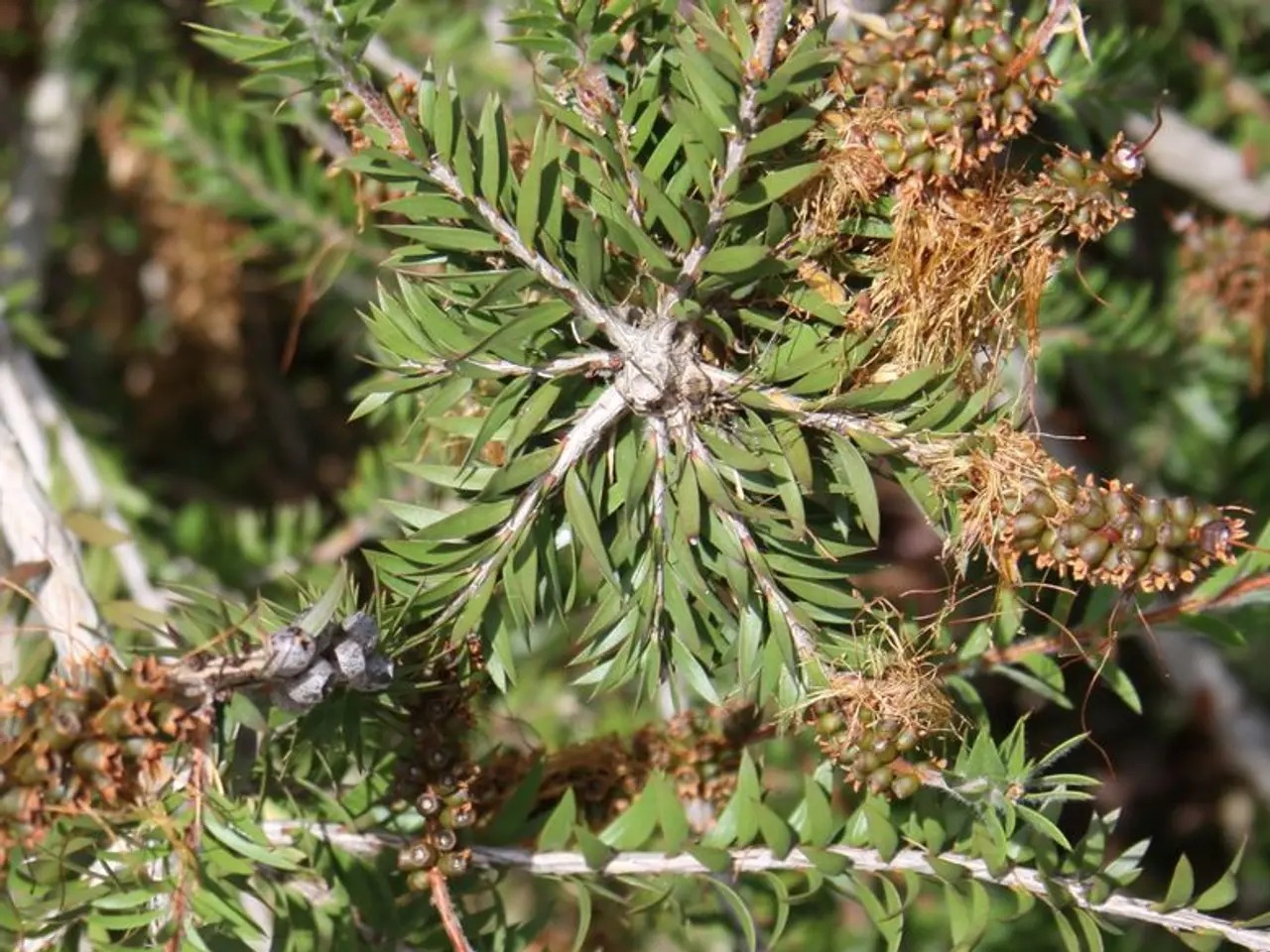Techniques for Achieving Success with Space-Saving Espalier Gardening
In the world of gardening, espaliering fruit trees has become a popular practice for cultivators seeking to make the most of their limited space. This technique, which involves training trees to grow flat against a wall or fence, not only adds beauty to a garden but also encourages fruit production in compact spaces.
To ensure success, gardeners must learn the art of training, pruning, and maintaining these trees, as well as mastering the tricks that guarantee success.
When it comes to espaliering, selecting the right rootstock is crucial. For fruit trees, dwarf or semi-dwarf rootstocks are the best choices. Among these, the M26 rootstock for apple trees is a popular semi-dwarf option, offering a manageable size with moderate growth, making it ideal for espaliering. Another semi-dwarf choice, the M9 rootstock, is known for its smaller size and good fruit production when properly pruned. For very small spaces, the M27 rootstock can be used, though it results in smaller trees.
Quince C rootstock is often used for pear trees, offering a semi-dwarf size suitable for espalier training. Dwarf rootstocks like M27 for apples can also be used for other trees like plums or cherries when available, though they may require more support.
Once the right rootstock has been chosen, gardeners can select fruit tree varieties that are well-suited for espalier training. Known for their ease in espalier training, apple trees produce high yields in small spaces. Similar to apple trees, pears are ideal for espalier due to their manageable growth and fruit production. Plums and cherries can also be trained using espalier methods, though they may require more support and care. While less common, figs can also be espaliered, especially in warmer climates.
Regular pruning is essential for maintaining the desired shape and size of your espaliered trees. Good air circulation is also important to prevent disease and promote healthy growth.
By choosing the right rootstock and fruit tree variety, and with proper care, you can successfully grow productive and visually appealing espaliered trees in small spaces. To make maintenance easier, consider planting disease-resistant varieties like 'Liberty' apples. Crab apples, which are universal pollinators for apples and a decorative addition to the garden, are also worth considering.
Lastly, remember that espalier-ing brings rewards that are practical and beautiful - and, in this case at least, nothing if not perennial to the classic garden. By choosing fruit trees with attractive leaves or blooms, like 'Bosc' pears with golden fruit or 'Honeycrisp' apples with red coloring, you can create a living art that is as functional as it is visually appealing.
[1] Source: RHS (Royal Horticultural Society) [2] Source: Gardening Know How [3] Source: Garden Myths [4] Source: The Spruce Eats
Gardeners who enjoy home-and-garden lifestyle and have small spaces can create visually appealing and productive espaliered birds, such as fruit trees, in their gardens. By following the right techniques, including selecting appropriate rootstocks like M26 for apples or Quince C for pears, pruning regularly, and providing good air circulation, one can ensure the success of their espaliered trees. For example, planting disease-resistant varieties like 'Liberty' apples or 'Bosc' pears with attractive leaves or blooms can make maintenance easier and create a living art display in the home-and-garden, enhancing lifestyle aesthetics.




